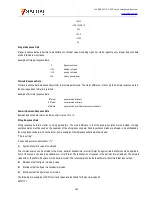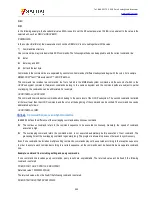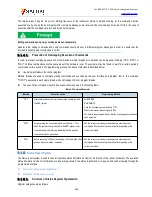
Tel: 886.2.2175 2930 Email: [email protected]
www.salukitec.com
242
As the amplifier generally has high loss in the reverse direction, the attenuator or coupler is not required to protect the receiver of Port
1 in reverse transmission measurement. In case of no attenuator, the dynamic range and measurement accuracy will be improved.
The source power can be increased to improve the dynamic range and accuracy.
The power must not be overloaded forward sweep or full 2-port calibration.
With the attenuator eliminated and RF power increased, the receiver of Port 2 of the analyzer may be burnt in forward sweep. Thus,
forward sweep or full 2-port calibration must not be done until the forward power is low enough, which cannot result in burning of the
receiver of Port 2 of the analyzer.
If the tested amplifier is highly isolated, the level of the reverse signal may be close to the base noise or crosstalk level of the receiver.
In order to reduce the base noise, the averaging function can be applied. The dynamic range and accuracy of measurement can be
improved by increasing the averaging times or reducing the IF bandwidth, at the sacrifice of measurement speed.
1) If the measurement accuracy is affected by the crosstalk, the through type response and isolation calibration can be
implemented to reduce crosstalk errors. Use the same averaging factor and IF bandwidth during calibration and measurement.
2) The frequency response of the test is a main error source in reverse isolation measurement. It can be eliminated by through type
response or through type response/isolation calibration.
3) If the temperature varies, the amplifier response may be thoroughly difference. The test should be done at the working
temperature of the amplifier.
8.9.4.
Steps of Reverse Isolation Measurement
1) Reset the analyzer.
2) Select the S12 measurement type.
3) Connect the amplifier as shown in Fig. 8.22 and provide the DC bias.
Fig. 8.22 Connection in Reverse Isolation Measurement
4) Set the analyzer corresponding to the tested amplifier.
5) Remove and calibrate the amplifier and perform through type response calibration or through type response/isolation calibration.
6) Reconnect the amplifier and set the scale of measurement display to facilitate observation.
7) Read the reverse isolation value at the corresponding frequency point through the marker.
8) Print or save the data.
8.10.
Small Signal Gain and Flatness
The small signal gain refers to the gain of the amplifier within the linear working zone. Generally, it is measured at the constant input
power within the frequency sweep range. The gain flatness refers to the gain change within the specified frequency range.






























